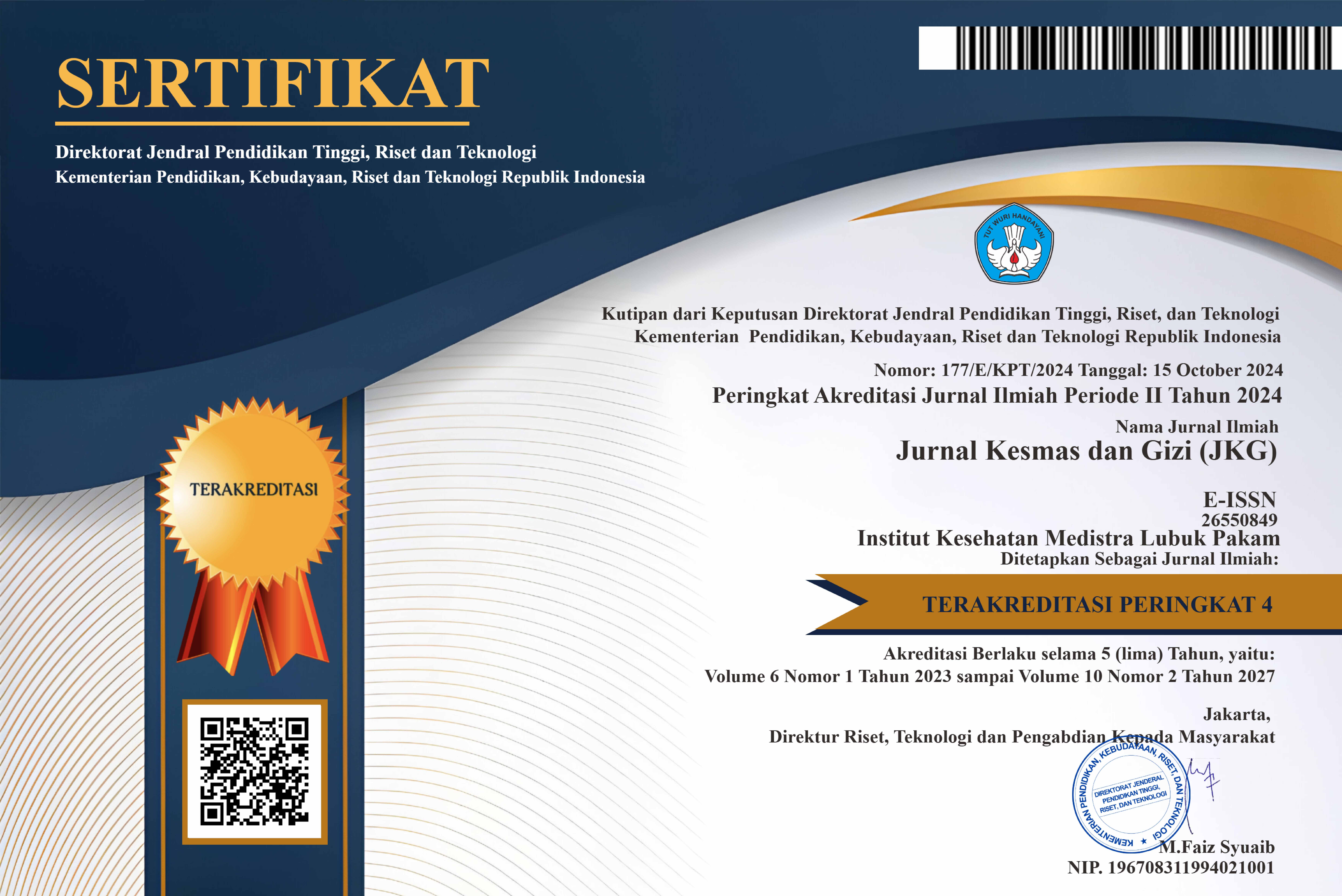Evaluation Of Metformin Use in Type 2 Diabetes Mellitus Patients X Clinic Sei Karang
DOI:
https://doi.org/10.35451/jkg.v6i2.2037Keywords:
Diabetes Mellitus Type 2, Medication Use, MetforminAbstract
Diabetes mellitus is a disease or chronic metabolic disorder characterized by high blood sugar levels accompanied by impaired metabolism of carbohydrates, lipids and proteins as a result of insulin function insufficiency, which can be caused by impaired insulin production by the Langerhans beta cells of the pancreatic gland or caused by a lack of insulin. responsiveness of body cells to insulin. Type 2 DM is often found in around 90% of diabetes sufferers and usually occurs from the age of over 40 years in obese people. Metformin is the most frequently prescribed therapy for patients with type 2 diabetes mellitus. In addition, Metformin has a very good safety profile and is also pharmacoeconomically beneficial. The research was carried out by tracing the patient's past data from medical records obtained from the medical records unit at the X Sei Karang Clinic in the patient's medical records for 2022. Based on gender, it shows that of the 40 patients using oral anti-diabetic drugs in type II DM patients based on gender in 2022, the majority of genders are women (28 people) and the rest are men (12 people). Based on age, it shows that there are more people aged 34-60 years with a percentage of 67.5% compared to those aged 61-77 years with a percentage of 32.5%. Therapeutic use of oral antidiabetic drugs in outpatient type II DM patients at the X Sei Karang Clinic for the period October-December 2022 is Metformin with a 30% result with or without combination therapy. The accuracy of using oral anti-diabetic drugs in outpatients with type II DM at the X Sei Karang Clinic in 2022, found that the accuracy of using anti-diabetic therapy drugs at the appropriate dose was 83.33%.
Downloads
References
Almasdy, D, et al. 2015. Evaluation of the use of antidiabetic drugs in type 2 diabetes mellitus patients at a government hospital in the city of Padang – West Sumatra. Journal of Pharmaceutical & Clinical Sciences
Ihsan, S., Leorita, M., Syukriadi, A.S.Z., Ibrahim, M.H., 2017a. Evaluation of the rationality of drug use in terms of prescribing indicators according to the World Health Organization (WHO) in all Kendari City Health Centers in 2016 5, 8.
Irawan, D. 2010.Prevalence and Risk Factors for Type 2 Diabetes Mellitus in Urban Areas in Indonesia. Thesis. University of Indonesia.
Pangemanan D, Mayulu N. (2014) Analysis of risk factors causing type 2 diabetes mellitus in women of productive age at the Wawonasa Health Center. e-Biomedic Journal.
PERKENI, 2019.Management and Prevention of Type 2 Diabetes Mellitus in Indonesian Adults, in: Guidelines for the Management and Prevention of Type 2 Diabetes Mellitus in Indonesian Adults 2019. pp. 7,12,16-36.
PERKENI, 2021.Management and Prevention of Type 2 Diabetes Mellitus in Indonesian Adults, in: Guidelines for the Management and Prevention of Type 2 Diabetes Mellitus in Indonesian Adults 2021. matter. 7,12,16-36
Tjay, T.H., Rahardja, K. 2015. Important Medicines (Efficacy, Use and Side Effects). 7th Edition First Printing. Jakarta: Publisher Elex Media Komputindo.
World Health Organization (WHO). 2015. Noncommunicable accessible. http://www.who.int/mediacentre/factsheets/fs355/en/. Retrieved 8 September 2015.
Downloads
Published
Issue
Section
License
Copyright (c) 2024 Romauli Anna Marbun

This work is licensed under a Creative Commons Attribution 4.0 International License.
Copyright in each article is the property of the Author.


























